-
 Bitcoin
Bitcoin $81,560.5117
-5.51% -
 Ethereum
Ethereum $1,771.5096
-6.33% -
 Tether USDt
Tether USDt $0.9997
-0.02% -
 XRP
XRP $2.0181
-5.66% -
 BNB
BNB $586.3042
-2.90% -
 USDC
USDC $0.9999
-0.01% -
 Solana
Solana $114.4035
-11.78% -
 Dogecoin
Dogecoin $0.1574
-8.81% -
 TRON
TRON $0.2356
-1.07% -
 Cardano
Cardano $0.6304
-7.98% -
 Toncoin
Toncoin $3.5817
-10.14% -
 UNUS SED LEO
UNUS SED LEO $9.4001
0.05% -
 Chainlink
Chainlink $12.4964
-9.88% -
 Stellar
Stellar $0.2554
-5.72% -
 Avalanche
Avalanche $17.9353
-7.12% -
 Sui
Sui $2.2095
-9.36% -
 Shiba Inu
Shiba Inu $0.0...01210
-4.11% -
 Hedera
Hedera $0.1588
-8.41% -
 Polkadot
Polkadot $3.9938
-3.88% -
 Litecoin
Litecoin $81.5008
-4.91% -
 MANTRA
MANTRA $6.3620
0.67% -
 Bitcoin Cash
Bitcoin Cash $295.0277
-4.58% -
 Dai
Dai $0.9999
0.01% -
 Bitget Token
Bitget Token $4.4599
-2.73% -
 Ethena USDe
Ethena USDe $0.9994
-0.05% -
 Pi
Pi $0.5677
-16.47% -
 Monero
Monero $209.1420
-4.72% -
 Hyperliquid
Hyperliquid $11.3307
-18.13% -
 Uniswap
Uniswap $5.6900
-8.31% -
 Aptos
Aptos $4.9771
-7.48%
How to control leverage risk in Bybit futures trading
Trading futures on Bybit with leverage can amplify gains but also magnify losses; use stop-loss orders, adjust leverage, and monitor margin to manage risks effectively.
Apr 03, 2025 at 04:36 am
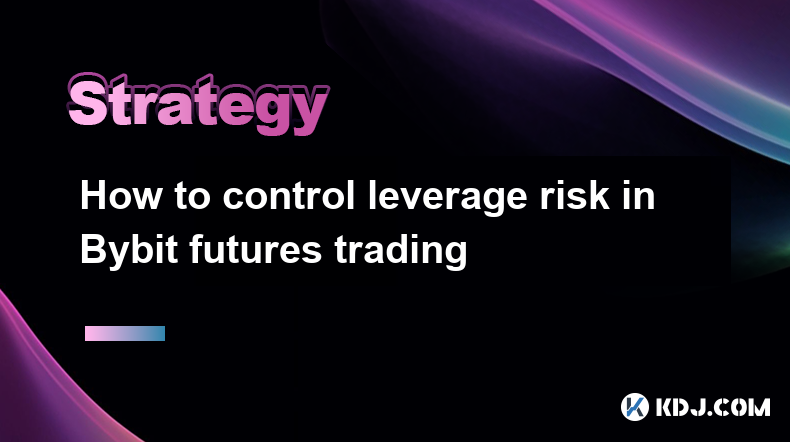
Trading futures on Bybit can be an exciting way to engage with the cryptocurrency market, but it comes with significant risks, particularly when using leverage. Leverage allows traders to amplify their exposure to the market, but it can also magnify losses. Understanding and controlling leverage risk is crucial for any trader looking to navigate the volatile world of cryptocurrency futures successfully. This article will explore various strategies and tools available on Bybit to help manage and mitigate the risks associated with leveraged trading.
Understanding Leverage and Its Risks
Leverage in futures trading refers to the ability to control a large position with a relatively small amount of capital. For example, with 10x leverage, a trader can control a position worth $10,000 with just $1,000. While this can lead to substantial profits if the market moves in your favor, it can also result in significant losses if the market moves against you. The key to managing leverage risk is understanding the potential for both gains and losses and setting appropriate risk management strategies.
Setting Appropriate Leverage Levels
One of the first steps in controlling leverage risk is choosing the right leverage level for your trading strategy. Bybit allows traders to select leverage from 1x to 100x, depending on the asset. It's important to consider your risk tolerance and trading experience when deciding on a leverage level.
- Start with lower leverage: If you're new to futures trading, it's advisable to start with lower leverage levels, such as 5x or 10x, to get a feel for the market without risking too much capital.
- Adjust leverage based on market conditions: In highly volatile markets, consider reducing your leverage to minimize potential losses. Conversely, in more stable markets, you might feel comfortable increasing your leverage.
- Use Bybit's leverage slider: Bybit provides a user-friendly interface with a leverage slider that allows you to easily adjust your leverage level before entering a trade.
Utilizing Stop-Loss Orders
Stop-loss orders are essential tools for managing risk in leveraged trading. A stop-loss order automatically closes your position when the market reaches a certain price level, helping to limit your losses. Bybit offers various types of stop-loss orders, including market and limit orders.
- Set stop-loss orders at entry: Always set a stop-loss order when entering a trade. This ensures that you have a predefined exit point if the market moves against you.
- Adjust stop-loss levels: As the market moves in your favor, consider adjusting your stop-loss order to lock in profits and reduce your risk exposure.
- Use trailing stop-loss orders: Bybit's trailing stop-loss feature allows you to set a stop-loss order that moves with the market, helping to protect your profits while still giving your trade room to grow.
Implementing Position Sizing
Position sizing is another critical aspect of managing leverage risk. It involves determining the appropriate amount of capital to allocate to each trade based on your overall trading capital and risk tolerance.
- Calculate your risk per trade: Decide on the maximum percentage of your trading capital you're willing to risk on a single trade. A common rule of thumb is to risk no more than 1-2% of your total capital on any given trade.
- Use Bybit's position size calculator: Bybit provides a position size calculator that helps you determine the appropriate position size based on your entry price, stop-loss level, and risk tolerance.
- Diversify your positions: Instead of putting all your capital into a single trade, consider diversifying across multiple positions to spread your risk.
Monitoring and Managing Margin
Margin is the amount of capital required to open and maintain a leveraged position. Bybit uses a cross-margin and isolated margin system, allowing traders to choose how they want to manage their margin.
- Understand margin requirements: Familiarize yourself with Bybit's margin requirements for different assets and leverage levels. Ensure you have enough margin to cover potential losses.
- Use isolated margin for riskier trades: Isolated margin allows you to allocate a specific amount of margin to each trade, limiting your risk exposure. This is particularly useful for riskier trades or when using higher leverage.
- Monitor your margin level: Keep a close eye on your margin level, especially during volatile market conditions. Bybit's platform provides real-time margin information, allowing you to make informed decisions about your positions.
Utilizing Risk Management Tools
Bybit offers a range of risk management tools designed to help traders control their leverage risk. These tools can be invaluable in helping you navigate the complexities of futures trading.
- Use the risk limit feature: Bybit's risk limit feature allows you to set a maximum amount of risk you're willing to take on a trade. This can help prevent your position from being liquidated during extreme market movements.
- Take advantage of the take-profit feature: Setting a take-profit order can help you lock in profits and reduce your exposure to market volatility.
- Utilize the position builder tool: Bybit's position builder tool allows you to gradually build your position over time, reducing the risk of entering a large position all at once.
Practicing with a Demo Account
Before risking real capital, it's highly recommended to practice your trading strategies using Bybit's demo account. This allows you to familiarize yourself with the platform and test your risk management techniques without any financial risk.
- Simulate real trading conditions: Use the demo account to simulate real trading conditions, including setting leverage levels, stop-loss orders, and position sizes.
- Experiment with different strategies: Try out various trading strategies and risk management techniques to see what works best for you.
- Analyze your performance: Review your trades and analyze your performance to identify areas for improvement and refine your risk management approach.
Staying Informed and Adapting to Market Conditions
The cryptocurrency market is highly volatile and can change rapidly. Staying informed about market conditions and adapting your trading strategy accordingly is crucial for managing leverage risk.
- Keep up with market news: Stay informed about the latest news and developments in the cryptocurrency market, as these can significantly impact prices.
- Monitor market trends: Use technical analysis tools to identify market trends and adjust your leverage and position sizes accordingly.
- Be prepared to exit trades: If market conditions become too volatile or move against your position, be prepared to exit your trades to minimize losses.
Managing Emotional Responses
Emotional responses can significantly impact your trading decisions, especially when using leverage. Developing a disciplined approach to trading can help you manage these emotions and make more rational decisions.
- Stick to your trading plan: Develop a clear trading plan that outlines your entry and exit points, leverage levels, and risk management strategies. Stick to this plan to avoid making impulsive decisions.
- Take breaks when needed: If you find yourself becoming overly emotional or stressed, take a break from trading to clear your mind and regain your focus.
- Learn from your mistakes: Instead of dwelling on losses, use them as learning opportunities to improve your trading strategy and risk management approach.
Common Questions Related to Controlling Leverage Risk in Bybit Futures Trading
Q: What is the maximum leverage available on Bybit?
A: Bybit offers leverage up to 100x for certain assets, but the available leverage can vary depending on the specific cryptocurrency and market conditions.
Q: How can I set a stop-loss order on Bybit?
A: To set a stop-loss order on Bybit, go to the trading interface, select the position you want to set the stop-loss for, and enter the desired stop-loss price. You can choose between a market or limit stop-loss order.
Q: What is the difference between cross-margin and isolated margin on Bybit?
A: Cross-margin uses your entire account balance to prevent liquidation, while isolated margin allocates a specific amount of margin to each position. Isolated margin can help limit your risk exposure on individual trades.
Q: How can I calculate the appropriate position size for my trades?
A: Bybit provides a position size calculator that takes into account your entry price, stop-loss level, and risk tolerance to help you determine the appropriate position size. You can also use the formula: Position Size = (Account Size x Risk per Trade) / (Entry Price - Stop-Loss Price).
Q: What should I do if my position is at risk of liquidation?
A: If your position is at risk of liquidation, you can add more margin to your account, reduce your position size, or close the position entirely to prevent liquidation. Monitoring your margin level and setting appropriate risk limits can help you avoid this situation.
Disclaimer:info@kdj.com
The information provided is not trading advice. kdj.com does not assume any responsibility for any investments made based on the information provided in this article. Cryptocurrencies are highly volatile and it is highly recommended that you invest with caution after thorough research!
If you believe that the content used on this website infringes your copyright, please contact us immediately (info@kdj.com) and we will delete it promptly.
- VanEck Has Made a Big Move in Bringing a Binance Coin BNB/USD ETF to the United States
- 2025-04-04 02:25:12
- 3 Low-Cap Altcoins with Insane Potential in 2025: Dawgz AI ($DAGZ), Render (RNDR), and Sei (SEI)
- 2025-04-04 02:25:12
- A major Solana ($SOL) whale has returned to the spotlight after transferring substantial funds to Binance in two separate batches.
- 2025-04-04 02:20:11
- The U.S. Senate Banking Committee has voted to approve Paul Atkins' nomination for the role of Chair of the Securities and Exchange Commission (SEC).
- 2025-04-04 02:20:11
- Pepe Coin (PEPE) Demonstrates Remarkable Growth
- 2025-04-04 02:15:12
- We Asked AI to Predict Litecoin (LTC) Price in Q2 2025 Following Fidelity's Crypto IRA News
- 2025-04-04 02:15:12
Related knowledge

How to use the three crows candlestick combination to determine the market top?
Apr 03,2025 at 03:18pm
Three Black Crows are a classic K-line combination form that is often used to judge the top of the market in technical analysis. This pattern consists of three consecutive negative lines, the opening price of each negative line is within the entity of the previous K-line, and the closing price gradually decreases. This pattern usually appears at the end...
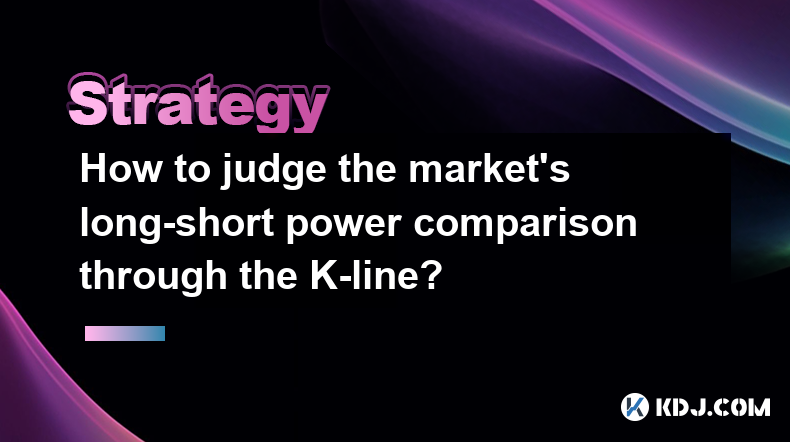
How to judge the market's long-short power comparison through the K-line?
Apr 03,2025 at 02:39pm
Judging the market's long-short power comparison through the K-line is an important skill in technical analysis. The K-line chart can not only show price changes, but also reflect the emotions and power comparison of market participants. This article will introduce in detail how to judge the market's long-short power comparison through K-lines. ...
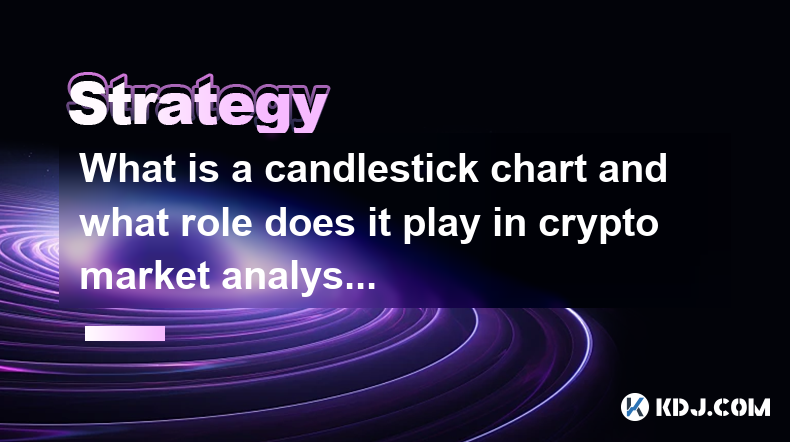
What is a candlestick chart and what role does it play in crypto market analysis?
Apr 03,2025 at 02:26pm
K-line chart, also known as candle chart, is a form of chart used to display changes in the price of financial products. In the cryptocurrency market, K-line charts are widely used to analyze the price trends of digital assets such as Bitcoin and Ethereum. This article will introduce in detail the basic structure, types of K-line charts and their specif...
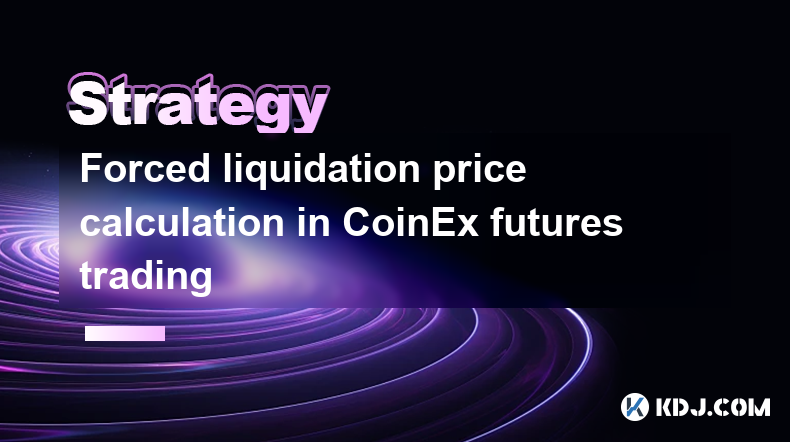
Forced liquidation price calculation in CoinEx futures trading
Apr 03,2025 at 05:35am
In CoinEx futures trading, understanding the forced liquidation price is crucial for managing risk and maintaining your positions. The forced liquidation price is the point at which your position is automatically closed to prevent further losses. This mechanism is designed to protect both the trader and the platform from negative account balances. The c...
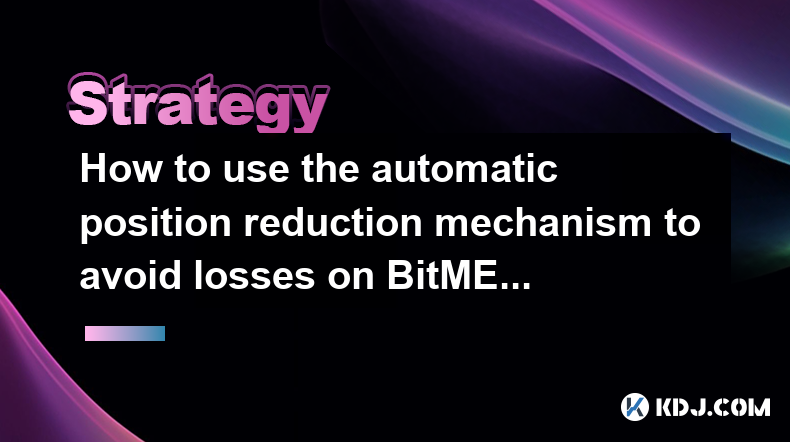
How to use the automatic position reduction mechanism to avoid losses on BitMEX
Apr 03,2025 at 02:56am
Using the automatic position reduction mechanism on BitMEX can be a strategic approach to managing risk and avoiding potential losses in the volatile cryptocurrency market. This feature, also known as Auto Deleveraging (ADL), is designed to help traders by automatically reducing their positions in certain conditions. To effectively use this mechanism, i...
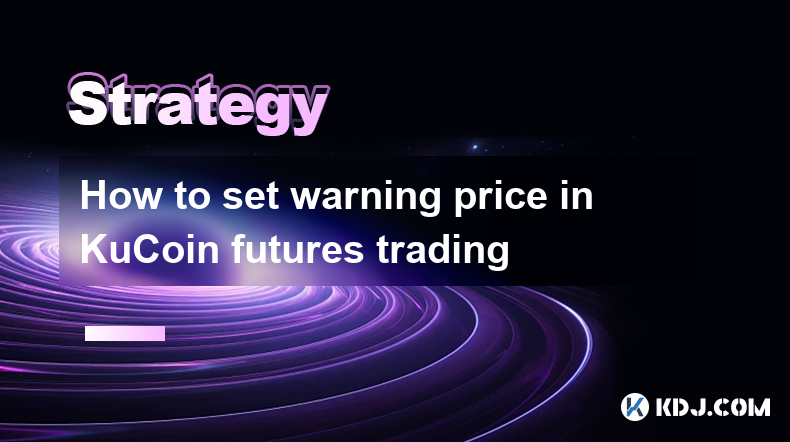
How to set warning price in KuCoin futures trading
Apr 03,2025 at 08:14am
Setting a warning price in KuCoin futures trading is an essential feature for managing risk and staying informed about market movements. This tool allows traders to receive notifications when the price of a futures contract reaches a specific level, helping them make timely decisions. To set a warning price, you need to navigate to the futures trading i...

How to use the three crows candlestick combination to determine the market top?
Apr 03,2025 at 03:18pm
Three Black Crows are a classic K-line combination form that is often used to judge the top of the market in technical analysis. This pattern consists of three consecutive negative lines, the opening price of each negative line is within the entity of the previous K-line, and the closing price gradually decreases. This pattern usually appears at the end...

How to judge the market's long-short power comparison through the K-line?
Apr 03,2025 at 02:39pm
Judging the market's long-short power comparison through the K-line is an important skill in technical analysis. The K-line chart can not only show price changes, but also reflect the emotions and power comparison of market participants. This article will introduce in detail how to judge the market's long-short power comparison through K-lines. ...

What is a candlestick chart and what role does it play in crypto market analysis?
Apr 03,2025 at 02:26pm
K-line chart, also known as candle chart, is a form of chart used to display changes in the price of financial products. In the cryptocurrency market, K-line charts are widely used to analyze the price trends of digital assets such as Bitcoin and Ethereum. This article will introduce in detail the basic structure, types of K-line charts and their specif...

Forced liquidation price calculation in CoinEx futures trading
Apr 03,2025 at 05:35am
In CoinEx futures trading, understanding the forced liquidation price is crucial for managing risk and maintaining your positions. The forced liquidation price is the point at which your position is automatically closed to prevent further losses. This mechanism is designed to protect both the trader and the platform from negative account balances. The c...

How to use the automatic position reduction mechanism to avoid losses on BitMEX
Apr 03,2025 at 02:56am
Using the automatic position reduction mechanism on BitMEX can be a strategic approach to managing risk and avoiding potential losses in the volatile cryptocurrency market. This feature, also known as Auto Deleveraging (ADL), is designed to help traders by automatically reducing their positions in certain conditions. To effectively use this mechanism, i...

How to set warning price in KuCoin futures trading
Apr 03,2025 at 08:14am
Setting a warning price in KuCoin futures trading is an essential feature for managing risk and staying informed about market movements. This tool allows traders to receive notifications when the price of a futures contract reaches a specific level, helping them make timely decisions. To set a warning price, you need to navigate to the futures trading i...
See all articles






















































































